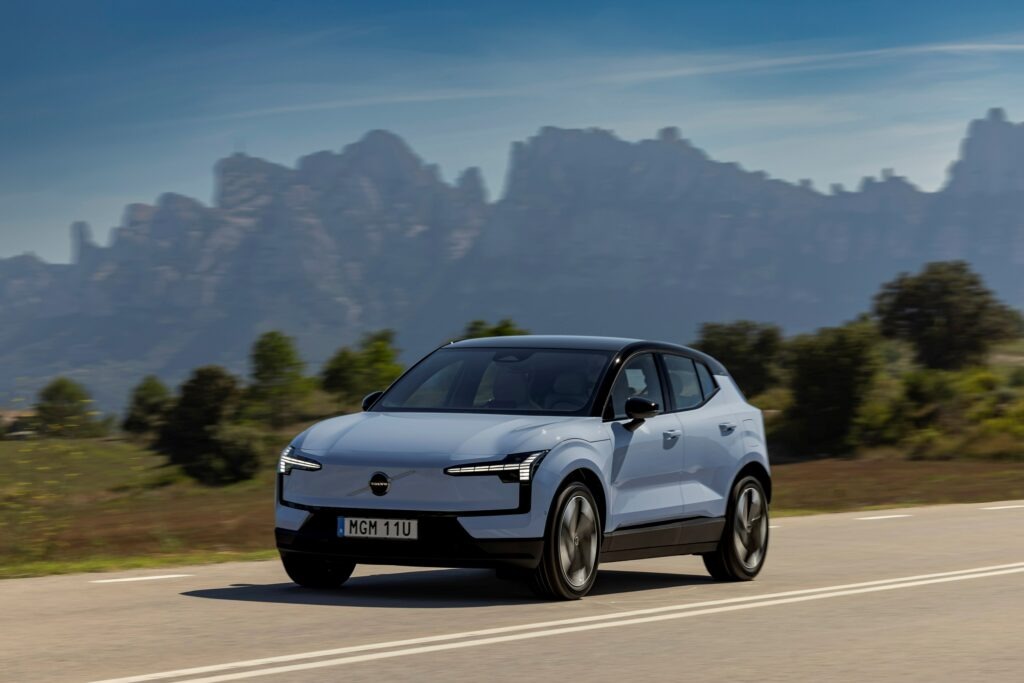UK bucks European trend with registrations growth in March
08 April 2024

The UK was the only one of the big five European markets to record new-car registrations growth in March. Autovista24 special content editor Phil Curry unpacks the influence of the plate-change month.
The UK posted a 20th consecutive month of increased deliveries in March, as passenger-car registrations grew 10.4%. According to new data released by the Society of Motor Manufacturers and Traders (SMMT), 317,786 new models took to the road.
This improvement contrasts with France, Italy, Spain and Germany, all of which experienced registration declines in the month.
The UK’s new-car market often sees peaks in March and September as the country introduces new year-specific numberplates. Buyers often wait until these periods to have vehicles delivered, as it dates cars to the latest year. March saw the first ‘24’ plates, while September will see ‘74’ plates come into force.
While the figures may seem promising, challenges lay ahead. Firstly, the market is heavily reliant on fleet registrations and has been for several months. Secondly, battery-electric vehicle (BEV) registrations have slowed, with minimal growth in a peak month for overall deliveries.
‘Market growth continues, fuelled by fleets investing after two tough years of constrained supply,’ commented SMMT chief executive Mike Hawes. ‘A sluggish private market and shrinking electric-vehicle market share, however, show the challenges ahead.
‘Manufacturers are providing compelling offers, but they cannot single-handedly fund the transition indefinitely. UK Government support for private consumers, not just business and fleets, would send a positive message and deliver a faster, fairer transition on time and on target,’ Hawes said.
Fleets forward
UK private registrations dropped 7.7%, while those to small businesses, based on traditionally low volumes, fell by 8%. Deliveries to fleets improved by 29.6%, continuing a trend of leading registration growth that began in February 2023.
In the first quarter of the year, the fleet market was up by 28.9%, with a market share of 59.8%, up by 8.6 percentage points (pp) over the first three months of 2023. The private sector was down by 9.2%, with a share of 38% (down from 46.2% in the same period last year), while the business market was down 7.7%, accounting for just 2.2% of the market.
There may be concerns over the performance of the private sector. The market has not increased year-on-year registrations since the 0.3% improvement in October 2023. The business market has also been unstable in recent months. It returned to a decline after an improvement in February.
This means the UK market is on shaky ground. Should fleet registrations slow, it is unlikely the difference will be made up by private and business buyers. The new ‘24’ plates were not enough to entice private buyers back to the market in March, but this may have been responsible for the improved fleet performance.
April will provide a more accurate indication of whether the UK will match the declines seen elsewhere in Europe.
UK electric market eases
Registrations in March showed that the BEV market has slowed. Volumes of all-electric cars were at their highest-ever level, with 48,388 units leaving showrooms in the month. However, this only equates to a 3.8% increase for the powertrain. Its market share fell year on year to 15.2%, down 1pp from the same point last year.
BEVs have had a rollercoaster ride in the UK market in recent months. Not counting the declines in November and December, March’s performance marked one of the lowest year-on-year inclines for the technology.
Following a difficult end to 2023, both January and February 2024 saw registrations improve by 21% and 21.8% respectively. However, this may have been due to carmakers holding on to some deliveries that were due in the last months of 2023. Registered this year, these models could count towards the zero-emission vehicle (ZEV) mandate, active from 1 January 2024.
BEVs have now entered a tricky phase, as manufacturers need to win over drivers who are more sceptical about the powertrain. Significant challenges lay ahead for all-electric models. This includes a charging infrastructure that is still unable to meet mass-market requirements and higher new-car list prices.
The SMMT highlighted that only the fleet market recorded any BEV volume growth in March. This further highlights the difficult task ahead of inspiring private buyers to take on the technology.
In the year to date, BEVs have increased registrations by 10.6% in the quarter, although the powertrain’s market share has stalled. It accounted for 15.5% of total deliveries in the first three months of the year, up by just 0.1pp.
Help needed
The SMMT is continuing to call on the government to help drive more private buyers into purchasing an all-electric model. According to the body, large fleets continue to drive BEV uptake, thanks to compelling tax incentives. However, a tough economic backdrop makes it challenging for consumers to invest the larger sums required in a new-vehicle purchase.
The UK has not had any purchase incentives for BEVs or plug-in hybrids (PHEVs) since the Plug-in Car Grant ended in June 2022. However, the market has remained on an upward trajectory since then. This is unlike other European countries, where the removal of incentives was followed by steep registration declines.
Yet the SMMT argues that more is needed to ensure future growth, as the powertrain tries to move beyond early adopters. Currently, a number of carmakers are offering incentives, perhaps driven by the need to meet ZEV mandate targets. However, these cannot continue indefinitely.
With vehicle excise duty (VED) applying to BEVs from next year, drivers could end up paying an extra £1,950. This is due to the ‘expensive car supplement’. Vehicles costing more than £40,000 will see an additional £390 applied to the flat rate of £190 for their second to sixth-years on the road. The SMMT estimates that at present, seven in 10 models would fall into this category.
‘Temporarily halving VAT on BEVs, revising the threshold for the expensive car supplement on VED next April, and abolishing the ‘pavement penalty’ on public EV charging by equalising VAT rates to 5% in line with home charging, would make a significant difference to consumers, helping more of them move to zero-emission vehicles sooner,’ the SMMT stated.
Petrol pulls ahead
Once again, the dominant powertrain in the UK was petrol, which led to registrations in March thanks to a 9.2% increase. This meant 177,019 units took to the roads, representing 55.7% of all deliveries in the month.
The SMMT combines mild-hybrids (MHEVs), which cannot travel any distance on electric power alone, with their respective fuel. This can distort the figures when compared with other European markets, which either spin out MHEVs into their own category or combine them with full hybrids (HEVs).
In the first quarter of the year, petrol registrations improved by 9.4%, with 306,925 units delivered. This is far ahead of the closest competitor, BEVs, highlighting the dominance of the drivetrain. Yet the 56.3% market share across the first three months of the year has fallen, by 0.5pp.
Therefore, registrations in March show that the market is still embracing petrol. Yet its internal-combustion engine (ICE) counterpart is not doing so well. Diesel fell 2.7% in the month. While this might suggest a slowdown in the diesel collapse, just 23,312 units were registered. This was the lowest total of all propulsion technologies and just 7.3% of the market.
Year-to-date figures show the diesel sector fell by 5.3%. March was the technology’s best volume month, but just 37,655 units were delivered between January and March, giving it a 6.9% market share. Still, with a combined 63% market share, it seems the UK may take some time to break its ICE dependence.
Hybrids heading forward
Full-hybrid vehicle (HEV) uptake reached record levels in March, with a 19.6% increase in registrations equating to 44,550 units. This helped the technology take a 14% market share improving on its 12.9% share from a year ago.
Across the first three months of the year, HEVs improved their deliveries by 12.5%, with a 13.6% market share only marginally better than the first quarter of 2023 (13.3%).
The best performance in March came from PHEVs. Registrations improved by 36.7%, albeit on lower totals, with 24,517 units. However, this was enough to push their market share up by 1.5pp to 7.7%.
At the same point last year, the powertrain was some way behind diesel, and languishing at the bottom of the powertrain charts. So far this year it is ahead of its ICE rival, although still some way behind HEVs, BEVs and petrol.
In the year-to-date, the market was up by 34%, as 42,559 units took to the roads. This gives the powertrain a 7.8% market share, up by 1.4pp.



